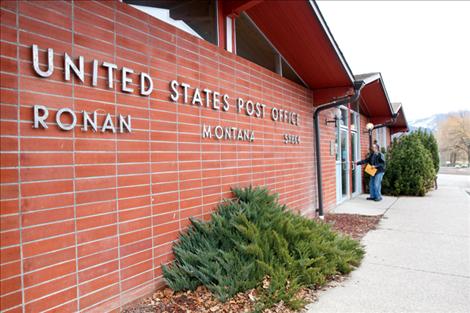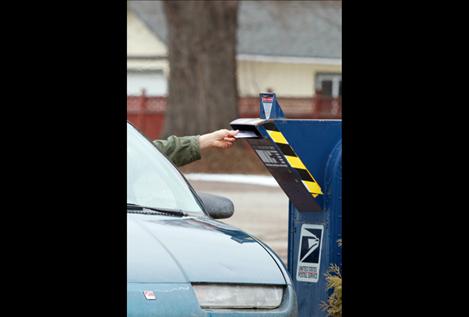Post office changes with the times
Hey savvy news reader! Thanks for choosing local.
You are now reading
1 of 3 free articles.
MISSION VALLEY — The United States Postal Service is drastically changing how it does business, but according to Senior Public Relations Representative Darleen Reid-deMeo, these changes are necessary to ensure the American people will always have a post office.
Last week, the USPS announced it will no longer deliver mail sent to street addresses on Saturdays. Post offices already open on Saturdays will remain open. Mail addressed to PO boxes will still be available for pickup, and packages will still be delivered.
The changes will save the USPS an estimated $2 billion per year.
“In a nutshell, we're trying to streamline our operations and save as much money as we can,” Reid-deMeo said. “We've been studying this since 2009 with customer outreach and data outreach, and the data reflects that there is less mail on Saturdays and less mail in general.
“We're trying to streamline our operations all over the place; this is just the next step and we're doing this so we can continue to serve the American people.”
“At one point, the post office was the largest employer in the United States, “and at one time, rightfully so,” Reid-deMeo said. However, the advent of e-commerce and email gave citizens a new way to communicate, pay bills and conduct business. This resulted in less business for the post office, which is where the difficulty started.
Then, in 2006, Congress required the post office to pre-fund medical and retirement benefits for employees.
No other government agency is required to do this.
“(Prefunding medical and retirement benefits) was mandated by Congress. I don't really have an answer (as to why,)” Reid-deMeo said.
Congress oversees everything the post office does in conjunction with the Postal Regulation Commission, Reid-deMeo said. After post office workers went on strike in the 1970s, the PRC was created and mandated a six-day per week delivery schedule. Technically speaking, Congress could force the USPS to continue delivering six days a week, but “We're having a regular dialogue with Congress to ask for help. We have to figure out a way to do business differently,” Reid-deMeo said.
According to a press release, the Postal Service recorded $15.9 billion in losses last fiscal year. It then defaulted on $11.1 billion in retirement health benefit prefunding payments and exhausted its borrowing authority with the U.S. Treasury.
“With a worsening financial situation, the Postal Service can no longer sustain losses and must act quickly to stabilize its finances,” the press release said.
In addition to these new changes, the USPS has also reduced the amount of processing plants by half - from around 400 plants nationwide to about 200. Reid-deMeo said they will continue to close and restructure plants, “if it makes sense and we can save money, fuel, equipment and electricity.”
The post office reduced its work force by 250,000 over the past few years (most by attrition, as more than half of post office employees are near retirement age) and while the new five-day delivery schedule will affect about 35,000 postal delivery men and women's routes, there will be no layoffs.
“We do everything we can for our employees,” Reid-deMeo said. “The Postmaster General opened a dialog with the USPS unions well before the announcement and informed them of what was happening; we're not laying anybody off ... we're doing everything we can to make this as seamless as possible for our employees.
“And don't forget, we're still going to have our carriers out on the road delivering parcels.”
Employees at several post offices on the Flathead Reservation said they were not concerned.
But even with these recent, drastic changes, Reid-deMeo said it isn't enough to save the post office.
“Even with the $2 billion we're going to save every year, we still have a long way to go. We're still looking at other ways to generate revenue, increase revenue and generate business because we want to deliver to the American people,” she said.
However, Reid-deMeo and the USPS are not waiving the white flag just yet. Over the past three years, the office has seen a 14 percent increase in their parcel business and www.USPS.gov is one of the most visited government websites.
“We're always going to be here, we'll just be different,” Reid-deMeo said. “That's the message we're trying to get out to the American People: We're doing everything we can to figure out ways to be more relevant; we'll still be here, we're doing everything we can; we're just going to be a little different than you're used to.”


















